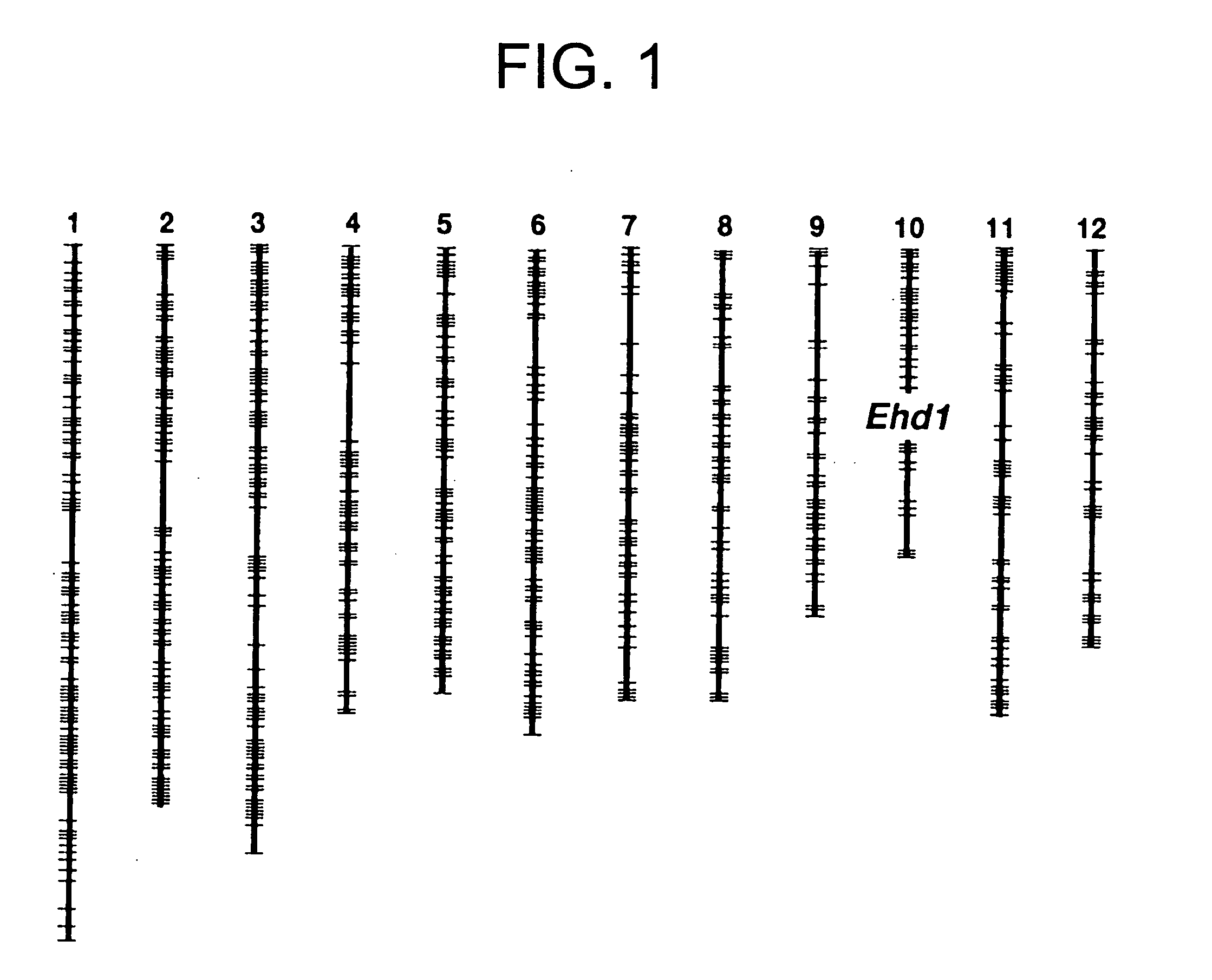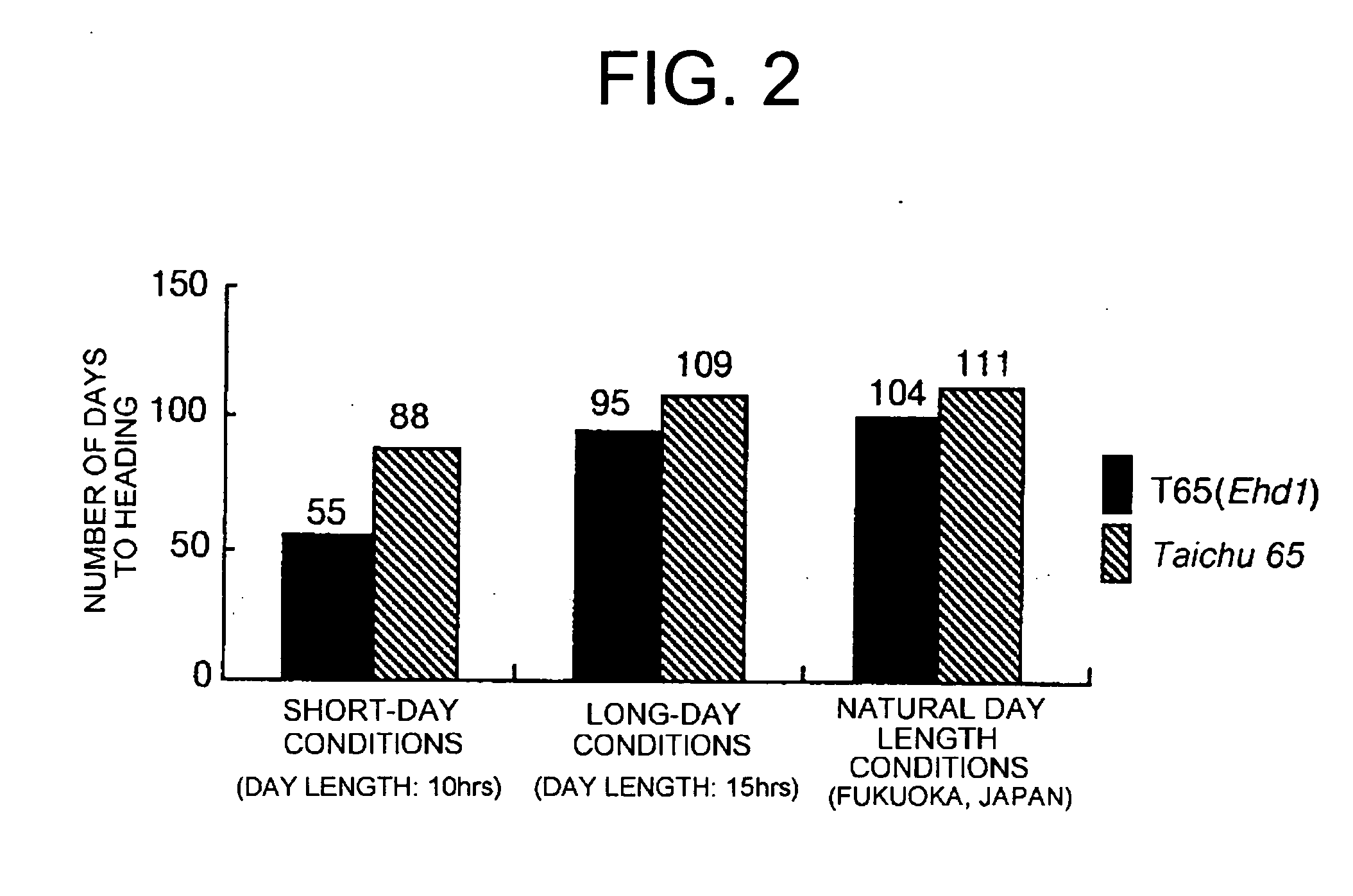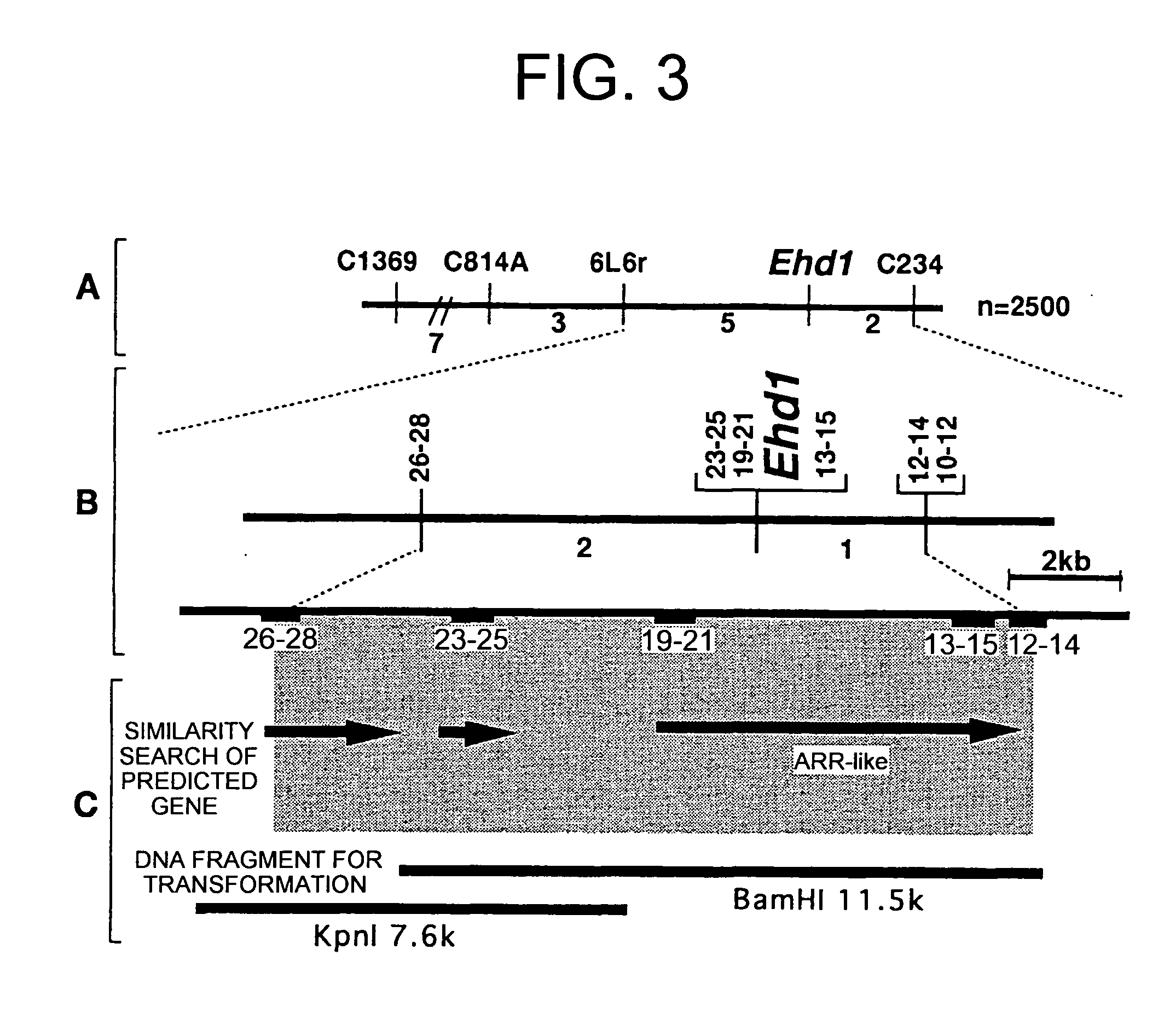Ehd1gene promoting plant flowering, and utlization thereof
a technology of plant flowering and ehd1 gene, applied in the field of ehd1 genes, can solve the problems of difficult identification and isolation of genes using map-based cloning at the level of resolution of linkage analysis, and achieve the effect of suppressing gene expression and ribozyme activity loss
- Summary
- Abstract
- Description
- Claims
- Application Information
AI Technical Summary
Benefits of technology
Problems solved by technology
Method used
Image
Examples
example 1
The Heading-Promoting Action of the Ehd1 Gene Under Short-Day Conditions
[0075] The Ehd1 locus is a QTL associated with heading time and detected using the progeny of a cross between japonica rice cultivar “Taichung 65” and West African region rice cultivar O. glaberrima Steud. (IRGC 104038). The Ehd1 locus has been proved to be located on the long arm of chromosome 10 (Doi et al., Breeding Science 49: 395-399, 1999) (FIG. 1). The Ehd1 gene of O. glaberrima (IRGC 104038) has been shown to comprise a heading-promoting action, and acts dominantly over the allele of Taichung 65. In this Example, both a nearly isogenic rice line T65 (Ehd1), in which the genetic background of Taichung 65 had been substituted with the Ehd1 gene of O. glaberrima, and Taichung 65 were cultivated under different day-length conditions to investigate the number of days until their heading. T65(Ehd1) headed seven days earlier than Taichung 65 under natural day-length conditions, 14 days earlier under long-day c...
example 2
High-Resolution Linkage Analysis
[0076] Genetic analysis performed hitherto has proven that the Ehd1 locus is positioned as a single gene locus (old name: Ef(t)) between RFLP markers C234 and G37, and co-segregated with C1369 (Doi, Taguchi, and Yoshimura: Japanese Society of Breeding, 94th lecture, Japanese Journal of Breeding (Suppl.), p 104, 1998). However, at the resolution level of this linkage analysis, it was difficult to isolate and identify genes using map-based cloning. In this example, detailed linkage analysis of the Ehd1 region was performed with a large segregating population essential for map-based cloning. A generation of progenies derived from backcrossing Taichung 65 and IRGC 104038 was used as the segregating population for linkage analysis. From these backcrossed progeny, plants were selected whose Ehd1 region was heterologous, and whose other genomic regions were mostly substituted with Taichung 65 type genome. These selected plants underwent self-fertilization, ...
example 3
Identification of a Candidate Gene Region
[0077] The nucleotide sequences of the RFLP markers flanking the Ehd1 gene were found to be comprised in published genomic nucleotide sequences, such that the nucleotide sequence of Ehd1 candidate genomic region was obtained from published nucleotide sequence data (GenBank Accession No. AC027038). Using information on the nucleotide sequences of this candidate genomic region, novel CAPS markers were prepared for narrowing down the candidate genomic region. Ehd1 was found to have two recombinations with CAPS marker 26-28 (primers [SEQ ID NO: 17 / 5′-ACGCTGCAACAAAGAGCAGA-3′] and [SEQ ID NO: 18 / 5′-TTGTTGACGAAAGCCCATTG-3′], restriction enzyme MspI); and one recombination with 12-14 (primers [SEQ ID NO: 19 / 5′-GGAGATCATGCTCACGGATG-3′] and [SEQ ID NO: 20 / 5′-CAAGCAAACACGGAGCGACT-3′], restriction enzyme BamHI). Furthermore, the Ehd1 gene was co-segregated with CAPS markers 13-15 (primers [SEQ ID NO: 21 / 5′-CCTTGCATCCGTCTTGATTG-3′] and [SEQ ID NO: 22 / 5′-...
PUM
 Login to View More
Login to View More Abstract
Description
Claims
Application Information
 Login to View More
Login to View More - R&D
- Intellectual Property
- Life Sciences
- Materials
- Tech Scout
- Unparalleled Data Quality
- Higher Quality Content
- 60% Fewer Hallucinations
Browse by: Latest US Patents, China's latest patents, Technical Efficacy Thesaurus, Application Domain, Technology Topic, Popular Technical Reports.
© 2025 PatSnap. All rights reserved.Legal|Privacy policy|Modern Slavery Act Transparency Statement|Sitemap|About US| Contact US: help@patsnap.com



